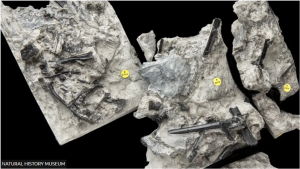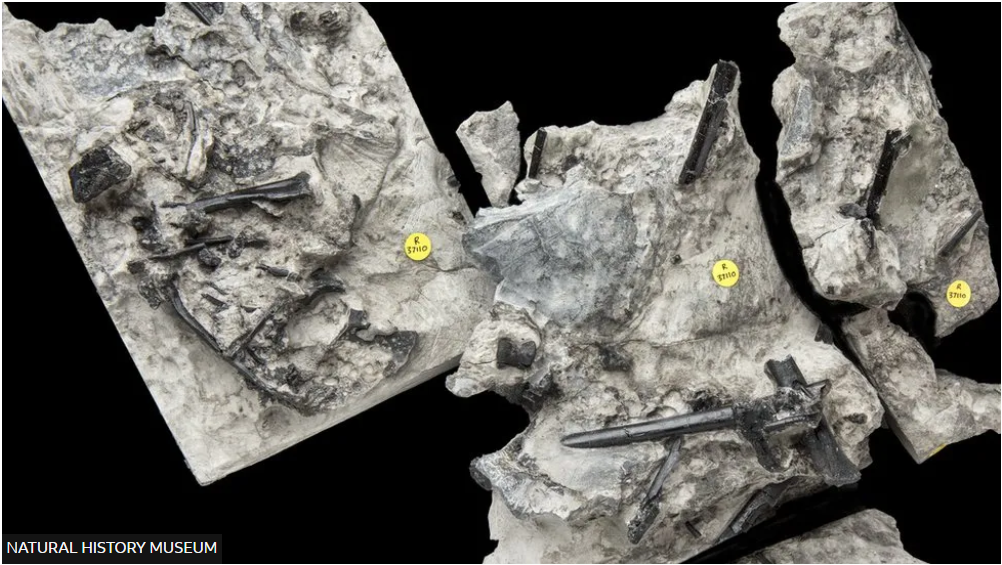A unique species of flying pterosaur, or reptile, which lived 166 -168 million years ago has been discovered on the Isle of Skye.
Its legs, wings, shoulders, and spine were found in a rock on a beach, but the fossilized skull was missing from there.
Scientists were astonished to discover a pterosaur from this period on the west coast of Scotland – which was mostly thought to have come from China.

Pterosaurs: the unique flying reptiles of the Isle of Skye
A creature named Sioptera is the second pterosaur found on Skye.
Its name comes from the Scottish Gaelic word cheò, meaning mist, and is a reference to the Gaelic name of the Isle of Psyche – Eilean a’ Cheo or Isle of Mist.
Fossils from this age, also known as the Middle Jurassic, are extremely rare, says Dr Martin-Silverstone of the University of Bristol, who also used a CT scanner to create a 3D digital model of the fossil.
“Finding anything from that time that’s more than just a bone is really exciting, too,” she explains.
The creature’s wingspan was probably between 1 meter and 1.5 metres.
The professor, who was not involved in the research, points out that this was also unique to Scotland. He further said, the research proves that a type of pterosaur existed between primitive and advanced stages of evolution.

“This is a time even before these birds, so pterosaurs ruled the skies. This research shows that pterosaurs were the first common animals in Scotland, flying high above the heads of dinosaurs,” he said.
The professor also led a project that discovered a type of pterosaur called Dierek in 2022.
He tells us that in the Middle Jurassic period, Scotland was a small part of an island in the middle of the Atlantic Ocean, with a subtropical climate with beaches and lagoons where pterosaurs might have liked to live.
Scientists at the Natural History Museum first found the fossil buried in the rock during excavation in 2006.
Dr. Paul Barrett, who was also on the expedition, says, “We were looking at dark black bone on dark gray rock. We were crawling on our knees and hands and seeing small pieces of bone on the surface. ”
You also check https://news24uk.com/army-chief-warns-britons-will-be-forced-to-fight/

Wow ! Raaj ji your writing style is so unique. Your research & dedication towards latest news is awesome.
I am visiting your website for latest news articles with easy and understandable language